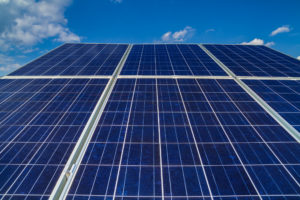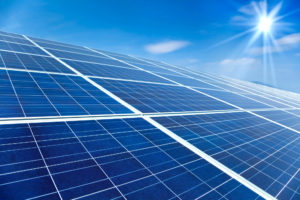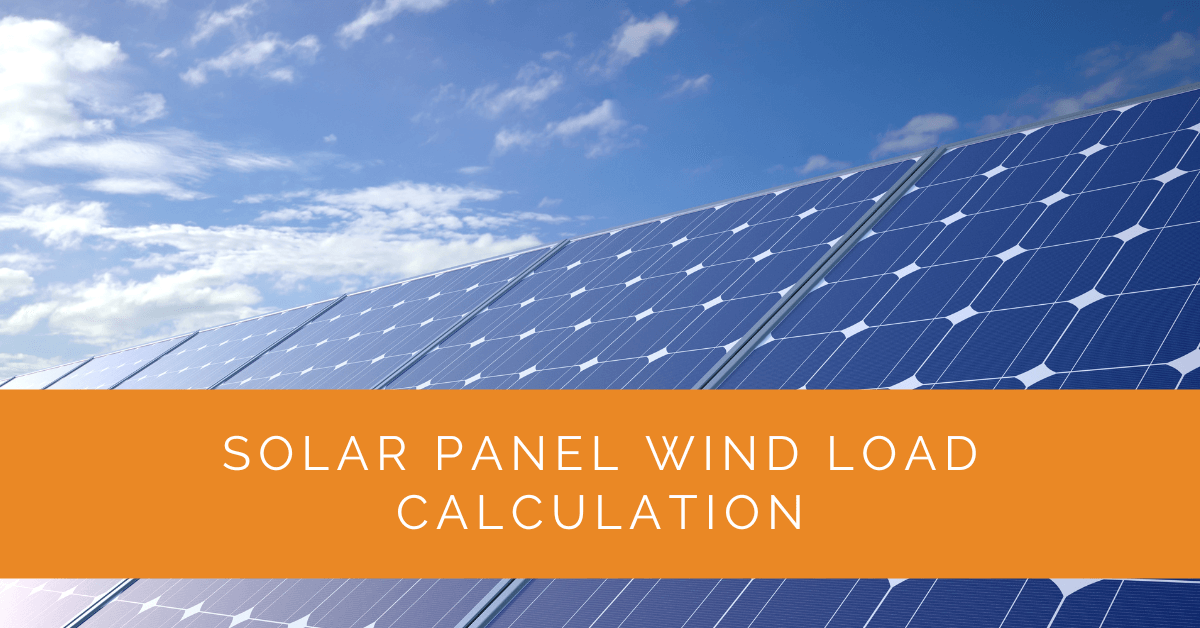Solar panels are now common on rooftops worldwide, providing clean and sustainable energy by harnessing the sun’s power. However, it’s essential to have a solid understanding of wind load calculation to ensure the safety and efficiency of rooftop solar installations. In this article, we’ll explore the intricacies of calculating wind loads on solar panels, examining the various factors that impact these loads, industry standards, and the vital role of professional engineers in the process.
Contents
- 1 Key Takeaways
- 2 Factors Affecting Wind Loads on Solar Panels
- 3 The Basics of Wind Load Calculations
- 4 Wind Load Codes and Standards
- 5 Solar Panel Wind Load Calculator
- 6 Calculating Wind Loads on Flat Roofs
- 7 The Role of Professional Engineers
- 8 Case Study: Ensuring Safety and Efficiency with Solar Panel Wind Load Calculations
- 9 Expert Insights From Our Solar Panel Installers About Solar Panel Wind Load Calculation
- 10 Experience Solar Excellence with Us!
- 11 Conclusion
Key Takeaways
- Understanding wind load calculations is crucial for the safety and efficiency of rooftop solar panel installations, with factors like roof type and local wind conditions playing a significant role.
- Industry-specific codes and standards, such as those provided by ASCE, must be followed to ensure compliance and safety in solar panel installations.
- The involvement of professional engineers is essential, as they bring expertise to calculate and design wind loads accurately, ultimately ensuring the reliability of rooftop solar systems.
Factors Affecting Wind Loads on Solar Panels
Regarding solar panels installed on rooftops, wind is a critical factor that demands meticulous consideration. Several factors influence wind loads on solar panels, including:
Roof Type
The type of roof on which solar panels are mounted plays a significant role in wind load calculations. For instance, flat roofs have different wind load characteristics than sloped or pitched roofs. Engineers must account for these differences to ensure the panels remain secure in high winds.
Local Wind Conditions
The location of the solar panel installation greatly impacts wind loads. Areas prone to strong winds require more robust design and engineering. The exact wind speed and direction at a particular location are essential for accurate calculations.
Tilt and Orientation
The tilt and orientation of solar panels affect how wind interacts with them. Panels tilted at a certain angle can minimize wind resistance, reducing the overall wind load. Engineers carefully consider the optimal tilt and orientation based on location.

The Basics of Wind Load Calculations
Engineers use specific equations and methodologies to calculate wind loads on solar panels accurately. These calculations involve intricate mathematical models that consider variables like wind speed, building height, and the shape of the solar panels.
One widely used method is based on the American Society of Civil Engineers (ASCE) standards. The ASCE provides equations and guidelines that engineers follow to assess wind loads. These equations consider factors such as the shape and size of the solar panel arrays and the building’s location.
Wind Load Codes and Standards
The ASCE standards mentioned above are just one example of the industry-specific codes and standards that govern wind load calculations for solar panels. These codes exist to ensure the safety and integrity of solar panel installations.
Engineers must be well-versed in these codes and standards, as non-compliance can lead to structural failures, damage to solar panels, or even safety hazards. Understanding and adhering to these regulations is crucial for every rooftop solar panel project.
Solar Panel Wind Load Calculator
Enter wind speed and panel size to estimate load per panel.
This tool provides an approximate value for educational purposes only. Always consult a qualified engineer for structural design.
Calculating Wind Loads on Flat Roofs
Let’s take a closer look at the calculation process for wind loads on solar panels, especially on flat roofs, a common choice for solar installations on commercial buildings.
Step 1: Determining Wind Speed
The first step in the calculation is determining the design wind speed at the installation location. This information is usually available from local weather agencies or ASCE maps.
Step 2: Establishing Wind Pressure
Engineers use the wind speed data to calculate wind pressures on the solar panel arrays. These pressures vary based on the panels’ angle, size, and spacing.
Step 3: Analyzing Roof Characteristics
The next crucial step involves assessing the roof’s characteristics, such as size, shape, and elevation. These factors impact how wind flows over the roof and interacts with the solar panels.
Step 4: Considering Safety Factors
Engineers incorporate safety factors into their calculations to account for uncertainties and variations. This ensures that the installation can withstand unexpected wind conditions.
Step 5: Designing for Safety
Once all calculations are complete, engineers design the solar panel installation to meet the calculated wind load requirements. This may involve using stronger mounting systems, additional bracing, or altering the tilt and orientation of the panels.

The Role of Professional Engineers
We understand the critical importance of professional engineers in solar panel installations. Our experience has shown that engineers bring their expertise to the table, ensuring the accuracy and safety of wind load calculations. We collaborate with solar panel designers to create robust and resilient systems. Our involvement can mean the difference between a secure and efficient installation and one that poses risks to the building and its occupants.
Case Study: Ensuring Safety and Efficiency with Solar Panel Wind Load Calculations
Background
A commercial building in a high-wind area required a rooftop solar panel installation. The building’s owners were keen to harness solar energy but were concerned about the potential wind loads impacting the panels. They approached Solar Panels Network USA to ensure a safe and efficient installation.
Project Overview
Our objective was to design and install a solar panel system that could withstand the significant wind loads in this high-wind region. The project required meticulous planning and precise wind load calculations to guarantee the system’s durability and performance.
Implementation
- Assessment and Customization: We began by assessing the building’s location, roof type, and local wind conditions. The building had a flat roof, which required specific consideration for wind loads. We opted for a custom-designed solar panel system to ensure a perfect fit and optimal performance.
- Determining Wind Speed: We sourced design wind speed data from local weather agencies and ASCE maps to understand the maximum wind forces the installation would face.
- Establishing Wind Pressure: Using the wind speed data, we calculated the wind pressures on the solar panel arrays. This involved considering the panels’ tilt, size, and spacing to determine the forces acting on them.
- Analyzing Roof Characteristics: We assessed the roof’s size, shape, and elevation to understand how wind would interact with the panels. This analysis was crucial to ensure that the system would remain stable under high wind conditions.
- Considering Safety Factors: We incorporated safety factors into our calculations to account for any uncertainties or variations in wind conditions, ensuring that the system would remain secure even in unexpected weather.
- Designing for Safety: Based on our calculations, we designed the solar panel installation with robust mounting systems and additional bracing. We optimized the tilt and orientation of the panels to minimize wind resistance and maximize stability.
Results
- Safety and Stability: The installation has remained secure and stable even during high wind events. The robust design and precise calculations ensured that the panels could withstand the local wind conditions without issue.
- Efficiency: Despite the high winds, the solar panel system has operated efficiently, providing the building with a reliable source of renewable energy. The optimized tilt and orientation also contributed to the system’s performance.
- Cost Savings: By using wind load calculations to design a durable system, the building owners have saved on potential repair and maintenance costs. The initial investment in a well-engineered system has paid off in terms of both safety and financial savings.
- Compliance: The project met all relevant ASCE standards and local regulations, ensuring that the installation was fully compliant and safe for long-term operation.
Summary
This case study highlights the critical importance of precise wind load calculations in ensuring the safety and efficiency of rooftop solar panel installations. By thoroughly assessing the building’s characteristics and local wind conditions, we designed a system that could withstand significant wind loads while operating efficiently. Our professional engineers played a vital role in this process, demonstrating the value of expertise in achieving a successful solar installation.
Expert Insights From Our Solar Panel Installers About Solar Panel Wind Load Calculation
Understanding wind load calculations is essential for ensuring that solar panels remain secure and efficient. Proper calculations consider various factors, from local wind conditions to the type of roof, ensuring the installation’s longevity and safety.
Senior Solar Technician
Adhering to industry standards like those from ASCE is non-negotiable for any solar panel installation. These standards ensure that our systems are safe, compliant, and capable of withstanding local wind conditions.
Lead Solar Installer
The role of professional engineers in wind load calculations cannot be overstated. Their expertise ensures that every aspect of the installation is designed to handle wind stress, preventing potential failures and ensuring optimal performance.
Solar Energy Consultant
Experience Solar Excellence with Us!
Trust in Solar Panels Network USA, where our seasoned experts deliver top-quality solar solutions for homes and businesses nationwide. With a legacy of countless successful installations and a commitment to sustainable energy, we’re your reliable partner in the solar journey. Ready for a brighter, eco-friendly future? Call us now at (855) 427-0058 and harness the power of the sun!
Conclusion
Understanding wind load calculation for rooftop solar panel installations is essential for the safety and durability of the system. It involves a complex process that considers various factors, including roof type, local wind conditions, and the specific characteristics of the solar panels. Adherence to industry standards and the involvement of professional engineers are crucial to ensuring the success of rooftop solar projects. When planning your rooftop solar installation, always prioritize safety and contact experienced professionals to assess wind loads and design your system accordingly.
About the Author
Solar Panels Network USA stands at the forefront of solar energy solutions, driven by a team of seasoned solar engineers and energy consultants. With over decades of experience in delivering high-quality solar installations and maintenance, we are committed to promoting sustainable energy through customer-centric, tailored solutions. Our articles reflect this commitment, crafted collaboratively by experts to provide accurate, up-to-date insights into solar technology, ensuring our readers are well-informed and empowered in their solar energy decisions.

